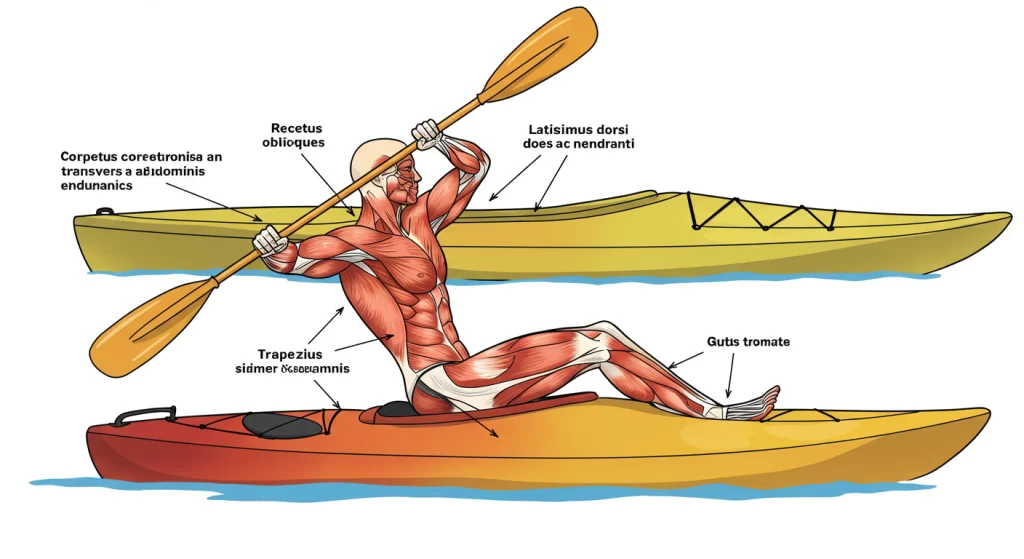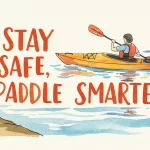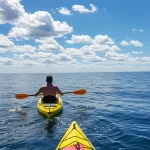
Introduction: The Hidden Workout in Every Paddle Stroke
There’s nothing quite like gliding across a glassy lake or tackling a rushing river in your kayak. The tranquility, the adrenaline, the connection to nature—it’s what keeps us coming back. But beyond the mental escape, kayaking offers something else: a full-body workout that challenges muscles you didn’t even know you had.
Whether you’re a weekend warrior or a seasoned paddler, understanding what muscles kayaking works can help you refine your technique, prevent injuries, and even level up your fitness game. In this guide, we’ll break down the anatomy of a paddle stroke, explore the primary and secondary muscle groups engaged, and share tips to maximize your strength gains. Let’s dive in!
Why Understanding Kayaking Muscles Matters
Kayaking isn’t just about arm strength. It’s a symphony of muscles working together—from your shoulders to your toes—to propel you forward. Knowing which muscles are involved helps you:
- Avoid injuries by balancing strength and flexibility.
- Improve efficiency by engaging the right muscles at the right time.
- Target weak areas with cross-training (hello, gym sessions!).
As Better Health Victoria notes, kayaking boosts cardiovascular health and muscular endurance. But to reap those benefits, you need to paddle smart.
Upper Body Muscles: The Powerhouse of Kayaking
Back Muscles – The Engine Behind Every Stroke
Your back muscles are the MVPs of kayaking. They generate the majority of your power, especially during the “pull” phase of the stroke.
- Latissimus Dorsi (Lats): These broad, wing-like muscles along your back are critical for pulling the paddle toward your body. According to Watersports Whiz, the lats transfer force from your core to your arms, making them essential for speed and endurance.
- Rhomboids and Trapezius: These muscles stabilize your shoulder blades, ensuring smooth, controlled movements. Weak rhomboids can lead to a hunched posture—a common issue for paddlers.
- Serratus Anterior: Often called the “boxer’s muscle,” it helps rotate and protract your scapula, keeping your shoulders safe during repetitive motions.
Pro Tip: Focus on engaging your lats by visualizing “rowing” the paddle blade through the water rather than just pushing with your arms.
Shoulders and Arms – Precision and Control
While your back does the heavy lifting, your shoulders and arms fine-tune each stroke.
- Deltoids: All three heads of your shoulder muscles (anterior, lateral, posterior) activate during the paddle’s entry, pull, and recovery phases.
- Rotator Cuff: This stabilizer group (including the teres minor and major) keeps your shoulders injury-free. Overuse is common here, so strength training is key.
- Biceps and Triceps: Your biceps curl during the pull, while triceps extend your arms during the push. Don’t forget your forearms—they’re why your grip doesn’t fail mid-rapid!
Core Muscles: Your Secret Weapon for Balance
Think kayaking is all about the upper body? Think again. Your core is the bridge between your paddle and the kayak, providing stability and rotational power.
- Rectus Abdominis (Six-Pack Muscles): These keep you upright when waves try to knock you sideways.
- Obliques: Every twist of your torso during a stroke fires up these side muscles.
- Transverse Abdominis: The deepest core muscle acts like a corset, stabilizing your spine.
A strong core isn’t just for looks—it’s what lets you execute sharp turns and maintain form during long paddles.
Lower Body Muscles: The Unsung Heroes
Yes, your legs matter in kayaking! They brace against the foot pegs, transferring power from your core to the paddle.
- Quadriceps and Hamstrings: These thigh muscles engage as you press into the kayak for leverage.
- Glutes: Your butt muscles help generate torque, especially during aggressive strokes.
- Calves: Subtle adjustments in foot pressure keep your kayak balanced.
As one Reddit paddler shared, “After a 10-mile paddle, my legs were just as sore as my arms!”
Secondary Muscles and Stabilizers
Kayaking also works smaller, often-overlooked muscles:
- Pectoralis Major/Minor (chest) for pushing motions.
- Erector Spinae (lower back) to maintain posture.
- Hip Flexors for torso rotation.
Muscles Worked in Kayaking vs. Other Sports
| Activity | Primary Muscles Worked | Kayaking’s Unique Edge |
|---|---|---|
| Cycling | Quads, Glutes, Calves | Full upper body engagement |
| Swimming | Shoulders, Lats, Core | Low-impact, seated rotational strength |
| Rowing | Back, Legs, Arms | Greater focus on balance and stability |
Maximizing Your Kayaking Workout: 5 Tips
- Warm Up: Dynamic stretches for shoulders, hips, and spine.
- Focus on Form: Engage your core and lats—not just your arms.
- Mix Up Intensity: Alternate between endurance paddles and sprint intervals.
- Cross-Train: Strengthen weak areas with rows, planks, and squats.
- Recover: Foam-roll your lats and shoulders post-paddle.
Conclusion: Kayaking – More Than Just an Arm Day
Kayaking is a stealthy full-body workout that builds strength, endurance, and mental resilience. By understanding the muscles involved—from your lats to your glutes—you’ll paddle smarter, recover faster, and tackle tougher waters with confidence.
Ready to put this knowledge into action? Share your favorite kayaking strength tips in the comments, or explore our guide on improving paddle technique for even more gains. See you on the water!

